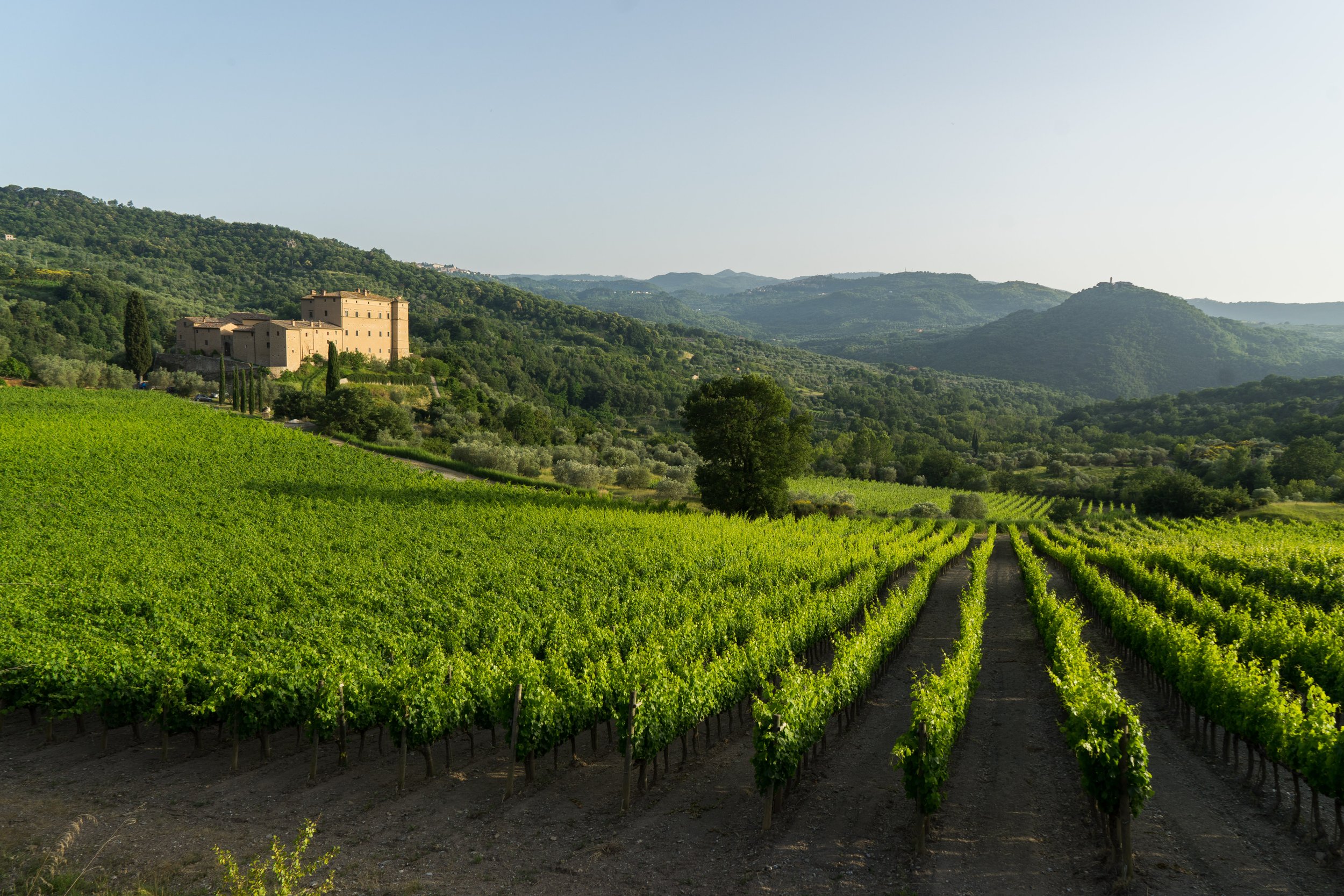
Cucina Povera 2023 & 2024
Cucina Povera: An Immersion in Rural Life
Terroir Hospitality & Castello di Potentino
Cucina Povera is a traditional Italian culinary style emphasizing simple, rustic cooking using locally sourced, seasonal ingredients and minimizing waste. It celebrates resourcefulness and the flavors of humble, everyday foods.
Participants joined us for a weekend retreat to experience Tuscan Cucina Povera at Castello di Potentino.
Castello di Potentino was an ancient castle built on an Etruscan site—Monte Amiata, an ancient volcano. The medieval building sits in a valley of unspoiled countryside dotted with vines and ancient olive trees, which the estate uses for its small production of high-quality wine, grappa, and oil.
Agriculture and viticulture were about growing and living, so eating and drinking well were essential elements in the Potentino ethos, which concerned the sustainability of how people inhabited a place and related to it physically and mentally.
Region - Monte Amiata
Monte Amiata, in the province of Siena, was an ancient volcano and the highest in Italy at 1,736 meters. The valley remained largely untouched, maintaining its rural charm and making it a paradise for nature lovers. Monte Amiata was the kingdom of chestnuts and mushrooms. Chestnuts, in particular, had always been present in traditional dishes like chestnut polenta, castagnaccio, and bread made with chestnut flour. But Amiata was also famous for boar or lamb buglioni, cinta meat, handmade pasta, and wine.
Etruscan History
The Etruscans arrived in what is modern-day Tuscany around 900 BCE. They brought wine, olives, citrus fruits, bread, and sheep. The ability to self-sustain was essential to their survival, and these communities built the foundations of what would later become the thriving Tuscan communities of today.
Culinary Activities
Agriculture, Food, and Cooking
Growing food to sustain communities has been the way of traditional communities around the globe – an ancient form of circular economy. The group experienced harvesting local ingredients and cooking together in the ‘Cucina Povera’ style. Together with local farm ladies, they recreated traditional recipes using ingredients from the land, treating everything with care and respect, never wasting anything, including cooking over an open fire – so ‘povera ma buona.’
Butchery
The group learned the art of ancient butchery from a local master. They broke down an entire animal, learning to utilize all parts from nose to tail, and incorporated this into their cooking.
Olive Harvest
Olive trees provided the foundation of crops in the Tuscan countryside. The group experienced the harvest of the fruits and the pressing of the oil. They also learned the science illustrating why these olive oils are some of the most revered in the world and how to taste for phenolics.
Bread Baking
Scholars believe that the Etruscans brought wheat and bread-making techniques to Italy, thereby starting a long-standing tradition. The group participated in daily bread-making exercises for their meals in the tradition of the ancient Etruscans and more modern techniques.
GALLERY FALL 2023
Foraging for Wild Foods
Mushrooms, chestnuts, and bitter greens were some of the rich natural resources that provided the basis for a sustenance diet. Traditional communities relied on these products as the foundation of their diet. The group explored the natural areas of the castle to forage for ingredients and created a dinner with found foods.
Cheese Making
The group learned to make Pecorino cheese like locals from herds of local sheep.
Photo Credits Jenny Shin, Milestone PR
GALLERY SPRING 2024
Photo Credits Jenny Shin, Milestone PR



















